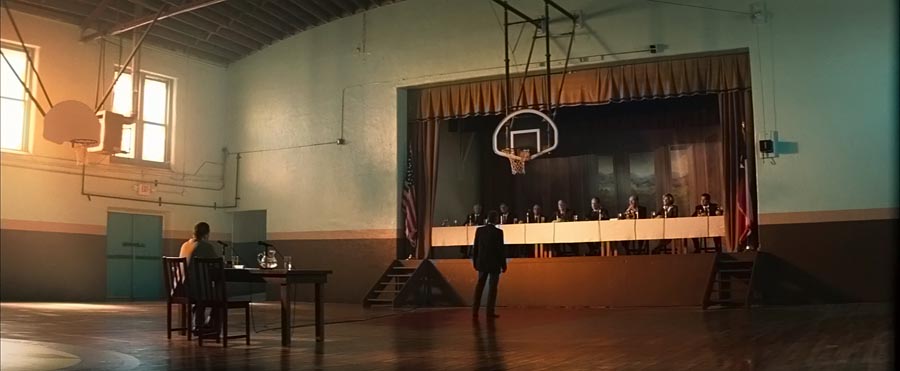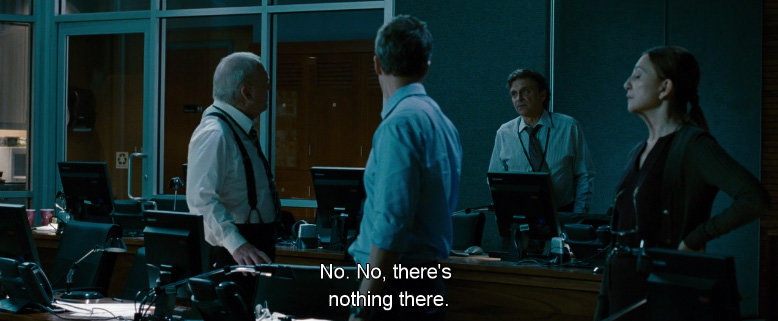
niulinfeng
-
Posts
21 -
Joined
-
Last visited
Posts posted by niulinfeng
-
-
which Chinese manufacturer? tell us so that we can avoid it in the future .
-
-
I used a 24-light Maxi outside the windows on the left to create a late afternoon effect in this gym:

how far did u put it outside of the gym?
-
Sorry I didn't see this post earlier, I would have said to add kickers, backlights and background lighting. If this is a commericial, everyone needs to look really good and happy.
adding slight kicks on the women's faces and a nice not over bearing backlight makes things look happier. Lighting your background adds dept and separation from the subjects.
Product shots are traditionally done with a soft overhead light and double backlight rims, then an inkie with a snoot on it to add a subtle highlight to the product label.
Hope all went well.
thanks for your post, sir, especially your suggestion for lighting products. I will use the that in the future .
-
I assume you've shot the commercial by now, I hope it went well! How did you create the lighting plots out of interest?
photo shop with the lighting kit icons downloaded from the internet
-
-
Please ignore the words "scene 4" in this pic below. It supposed to be scene 3.
Thx


-
for scene 1


-
my lighting plot

-
Hi, I will be DP a commercial indoor scene for a medicine. This will be my first time DP a commercial and I haven't DPed any works in the past 2 years, and I am not even sure if my lighting plot makes any sense, so I am nervous as hell. I really want to get some help/suggestions/corrections from you guys. Just feel free to criticize and correct my lighting plot, because I know I am a shitty commercial DP. I 'd appreciate if u can use graphics as assist or make a totally new lighting plan to correct my original plan.
As for the requirement of the lighting part of this commercial:
The director wants a bright healthy indoor daylight look:
There are 5 scenes needed to be lit;
I assume the camera is Alexa and the EI setting is 800, depth of filed remain unknown;
I attached the set design and the storyboard from art director and my lighting plot and all the info I can get for the commercial to this post.\
I really appreciate you guys' help
Thx




the lighting plot made by me
-
What is the key to make digital look like film? what should I pay attention to when make digital look like film look?
-
Very good question
With black and white, reproduction of tones comes from the cooperation of negative and positive. Maximum density is up to the positive alone. You can literally overflow a print with light in the cinema. Limitations to picture image quality are then the lens, the lamp-mirror-lens combination, and the screen.
Color films are more easily washed out with light due to dye clouds instead of silver wool.
Cinema illumination and optical conditions being standardized to some extent, you have standard density prints and differing ones. You want to discuss the look under the actual circumstances, I presume. In my eyes, you don’t have much room for plays, so it’s mostly fine tuning what people talk about. For a série-noire picture you might have a hard time finding a print stock that has enough silver on it for those deep shadows. Eventually it could be hard to find the lab where they go for more than log 3.5 max density while the stock actually could be at hand.
Film looks is a red rag for me.
THanks for the reply, sir. Could u please tell me what is "density prints "? and I am not familiar with the Cinema thing. where can i find those info about the standard Cinema illumination and optical conditions for watching a film?
-
But these days, sometimes a negative never sees print stock, it gets scanned to digital, finished digitally, and shown digitally. In general the standards for digital cinema projection and delivery files (DCP's) are meant to emulate the look of projected prints. So at some point in the digital intermediate process, after your film has been scanned to a 10-bit Cineon log file -- essentially the digital "negative" -- you have the choice of recording the color-corrected version of the log image onto film stock for printing, or converting it to P3 color space and gamma for digital projection, and also to Rec.709 for release for home video / broadcast TV.
Sir, could u tell me what is P3 color space? why people mention Rec.709 so often? is that kind of a industry standard ?
-
"niulinfeng" you should go to My Controls and adjust your User Name to be a first and last name per the forum rules. Maybe your name is Niu Lin Feng and just needs spaces added to look correct, but for now, it's hard to tell what your name is. Thanks.
Sorry for that ,sir, I am not sure if I can change it since I am using Facebook to sign in,
-
What decides the final look of the film? the film you shoot with or the film you print with? or both?
-
-
Yes, as in most lamps you buy at stores, at least here in the US.
Can i get away with this limit by buying bulb sockets that support more power output?
-
Generally, yes, you'll be ok, but you need to be careful with what you're putting it into as most things are only rated for 60w bulbs. That said in brief spurts you can be fine running a 150W in them. But you gotta keep an eye on it.
Another option would be baging something like a par 64 off of the ceiling to boost the overall ambience of the room and then keeping with the 60W bulbs and employing negative fill (black solids to take light away from the opposite side of the lamp lighting)
most lightings are rated for 60w bulbs. do u mean those bulb socket,sir?
-
I'm talking about U.S. power (60 Hz AC, 240V/120V) for a moment here:
Household circuit breaker boxes usually break down the incoming power into 20A circuits, but more than one outlet in a room may share that circuit (and it's not always 20 amps / 20A, some are 15A, etc.) So first thing is to look in breaker box and see how the power is divided up, and second is to mark every outlet in the house in terms of which circuit it belongs to. You can do this by switching off every circuit except one and then plugging a lamp or circuit tester in each outlet until it lights up, and then marking every outlet for that circuit and the matching switch in the breaker box, then moving on to the next switch.
Watts = Volts x Amps (some people use the mnemonic "West Virginia" to remember that.) Appliances are usually rated for 120V, so 120V x 20A = 2.4kW. However, due to line loss over distance, amount of power you can run through a cord, start-up power, etc. most people round down to 20A allows 2kW, or 1kW per 10A. But again, that's per circuit, not per outlet. As a general rule, often outlets along the same wall might be using the same circuit. Also, keep in mind that other appliances in the house may be drawing power on the same circuit -- refrigerators for example.
As for how many usable circuits there are in a house, it depends on the house. Some older houses only have 10A and 15A circuits (and some use a fuse box, not circuit breaker boxes, so carry spare fuses for those) and don't have a lot of total power available.
Thanks for your explanation, sir! I am going to make a short film in my apartment, so I want to boost the lighting of my apartment by replacing the current lightbulbs with one 150W and two 200W bulbs. Just want to know if it is feasible.
-
hi, everyone, I am a newbie in lighting, so I have a very basic question to ask : how much wattage can a household can provide?





any difference between the raw from Arri XR module and the raw from any external raw recoders like Gemini
in ARRI
Posted
hi, is there any difference between the raw from Arri XR module and the raw from any external raw recorders like Gemini?
I have been wondering this, cause I always assume anything build in or original is always better than something from "outside"
thx!